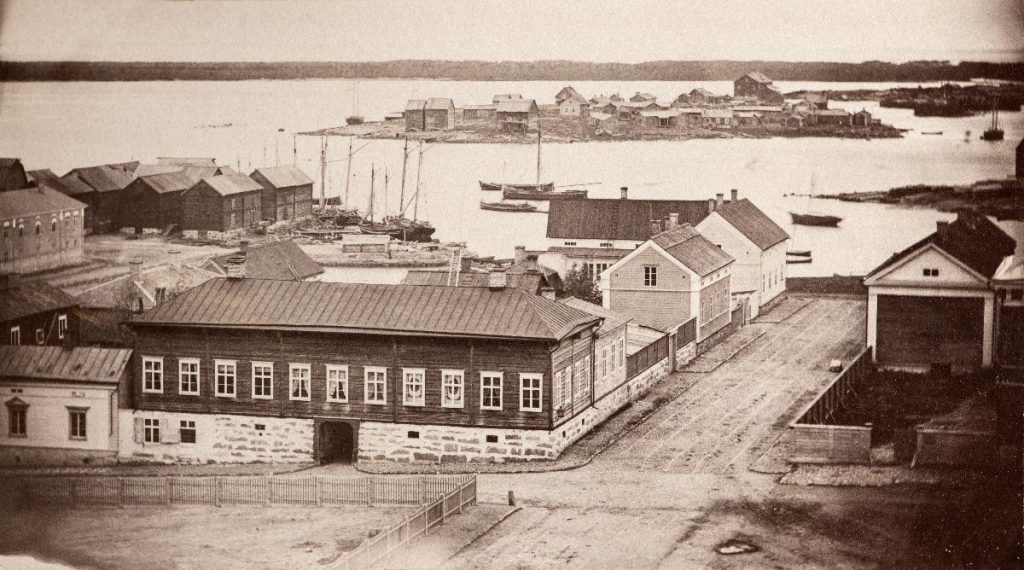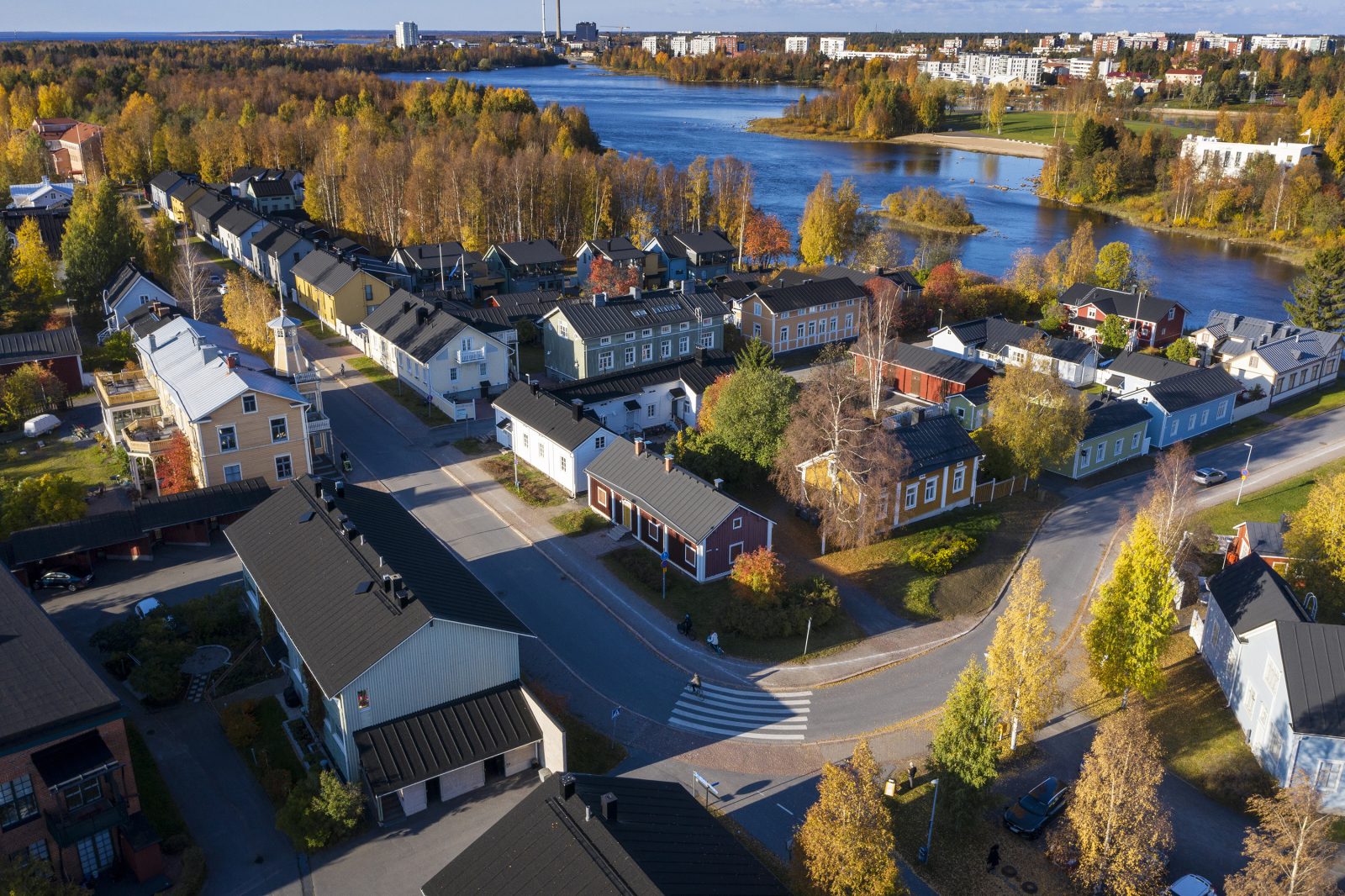Pikisaari has lived through many phases. For a long time, it was just another nameless islet until the fishermen started to utilize it. After the fishermen, early industry started to develop on the island in the 1600s. A pitch mill gave the island its signature name. Pitch was obtained by distilling tar. Pitch and tar were used in building sailing ships. The location of the pitch mill can still be seen on the island’s eastern coast. You can still vividly smell the scent of tar and pitch on the ground on a hot summer’s day.
In the mid 1700s, a sea customs office was relocated on the island. Some started calling Pikisaari “the customs island”. Many shipyards operated on the island during the 1700s and the 1800s.

A photo taken from the tower in Oulu Cathedral in the 1800s. Pikisaari is visible in the back. The house in the front of the photo is sea captain Fabritius’ house. Photo: Finnish Heritage Agency, JOKA Press Photo Archive, Kaleva, JOKAKAL3B:15512.
In the latter half of the 1800s, Pikisaari started to develop into an industrial island. A huge steam sawmill, a machine workshop with its foundries and a wool mill brought residents to the island. Workers were picked up from the mainland with ships and boats. The smoky and noisy island could not be recognized as it is today. The island started to turn into the idyll it now is in the 1980s. Industrial factories stopped operating on the island and were replaced by artists and craftsmen. Teaching craftsmanship and restoration work also took place on the island. Today, Pikisaari is the home of the few survived wooden house neighborhoods in Oulu. The Sailor’s Home Museum functions as the gate to the island’s fascinating past.
Watch the video below to learn more about the phases of Pikisaari.
